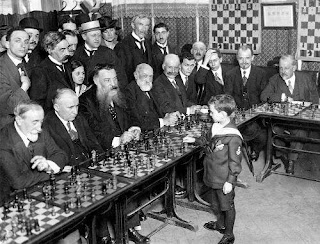Maximizing transfer

. . . . At the moment I have not the slightest idea how I am going to attack this subject. But the past weeks show that blogging is a very fruitful way to order my thoughts. A lot is clarified already, which helps to add precision in the method of chess improvement. Especially the discovery of the right and the wrong moment to add intelligence is very important. Question. Let's see where this will lead to. An important question that is not really adressed sofar is how to maximize transfer. With "transfer" I mean the the following (in the context of tactics training): If I exercise problem x in the right way then that will have a positive effect on solving problem y, which I have never seen before, but has something in common with problem x. Boundaries. Let's define the extreme boundaries first. The transfer is 100% if I only have to do 27 problems, one problem per tactical motif, and I will be able to solve every problem at CT without furth...








